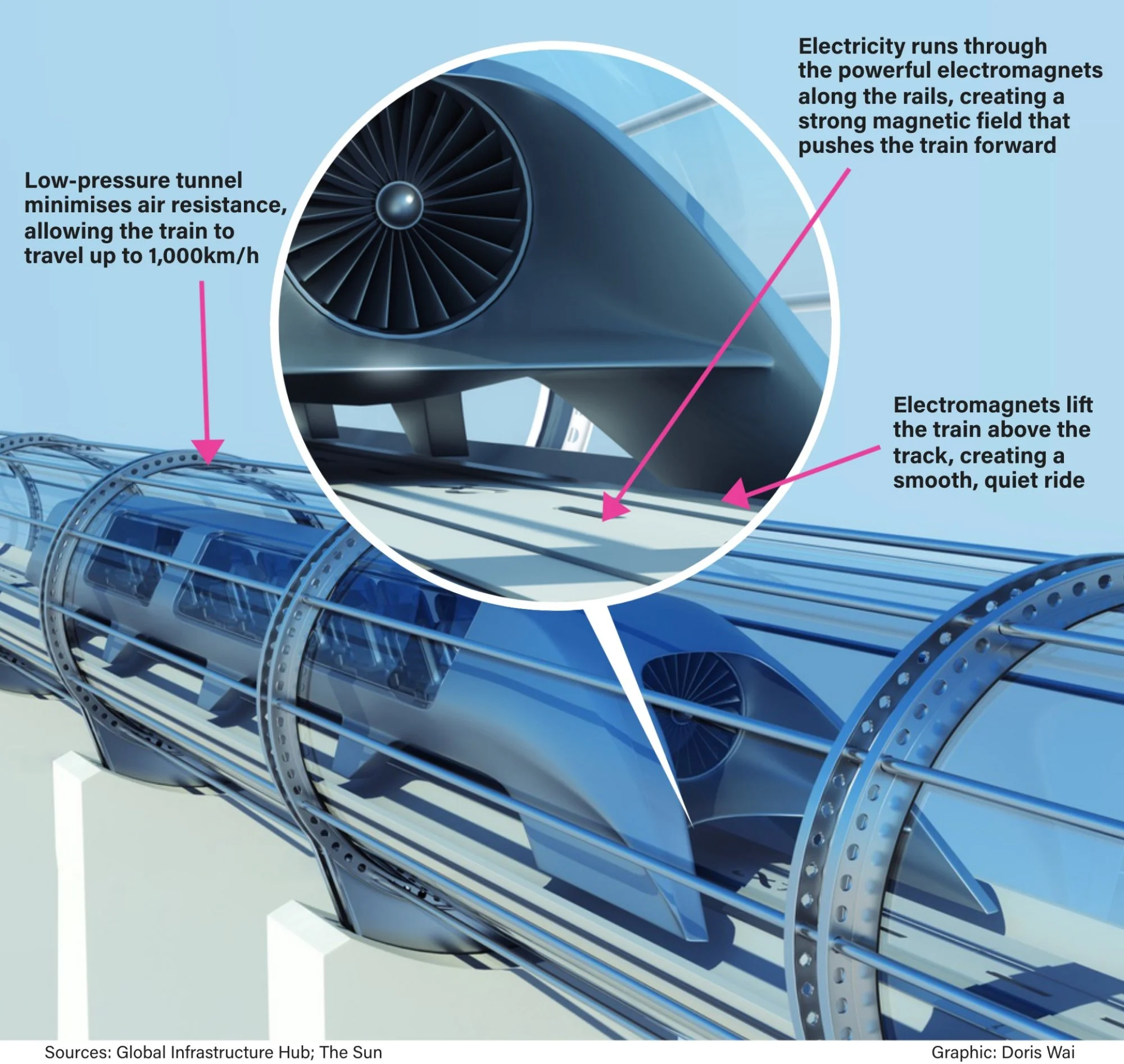
Europe’s Hyperloop Test Tunnel Opens in the Netherlands
Get ready for a transportation revolution! The Netherlands has unveiled Europe’s longest tunnel, specifically designed for testing hyperloop technology. Europe hyperloop
This exciting development marks a significant leap towards a future where travel is faster, cleaner, and altogether more futuristic.
What is Hyperloop? Europe hyperloop
Imagine traveling between cities at near-sonic speeds, gliding effortlessly through a low-pressure tube. That’s the basic idea behind hyperloop. Passengers or cargo would board capsule-like pods that levitate within a near-vacuum environment, propelled by magnetic levitation and propelled by linear electric motors. Because of the minimal friction, these pods could theoretically reach speeds of up to 700 miles per hour (1,126 km/h).
The Dutch Hyperloop Center
The newly opened test facility in Veendam, Netherlands, boasts a 420-meter-long Y-shaped tunnel. This state-of-the-art center will serve as a crucial testing ground for various hyperloop technologies. Companies developing hyperloop systems can use this facility to experiment with pod designs, propulsion systems, and the low-pressure environment within the tube.
Benefits of Hyperloop Travel
The potential benefits of hyperloop are numerous:
- Speed: Imagine traveling from Amsterdam to Barcelona in just a couple of hours, compared to the current 15-hour drive. Hyperloop could drastically reduce travel times between major cities.
- Sustainability: Hyperloop systems can be designed to be energy-efficient, potentially using renewable energy sources for propulsion. This could significantly reduce carbon emissions compared to traditional transportation methods.
- Convenience: Hyperloop promises a smoother and more comfortable travel experience compared to airplanes, with no turbulence or long security lines.
The European Hyperloop Centre: A Glimpse into the Future of Travel
The future of travel is inching closer, and it might involve shooting through tubes at near-sonic speeds! The Netherlands has unveiled Europe’s longest tunnel specifically designed for testing hyperloop technology, marking a significant leap towards a transportation revolution. But this Dutch facility boasts a unique feature that sets it apart: the world’s only “lane switch.”
The European Hyperloop Centre: A Network in the Making
Imagine a network of hyperloop tubes crisscrossing continents, whisking passengers and cargo between cities in record time. That’s the ambitious vision of hyperloop technology, and the European Hyperloop Centre (EHC) is taking a crucial step towards making it a reality. The 420-meter-long Y-shaped tunnel features a groundbreaking innovation: a tunnel branching off from the main track, simulating a “lane switch.”
“You need this to create a network,” explains EHC director Sascha Lamme. “The lane switch is a diverging part of the infrastructure, so one part goes to Paris, for example, and the other heads off to Berlin.” This innovation allows scientists to test how vehicles navigate switches at high speeds, a critical step for developing a functional hyperloop network.
The Road to Hyperloop Travel Europe hyperloop
The EHC isn’t just about lane switches. Dutch-based firm Hardt Hyperloop plans to run initial vehicle tests in the coming weeks, and the center is open to companies developing any aspect of Hyperloop technology. While passenger travel is still a ways off, Lamme anticipates full-scale operations on a short route (around five kilometers) by 2030.
This development comes after Elon Musk first captured imagination with his 2013 proposal for a hyperloop system linking San Francisco and Los Angeles. Several cities have explored the idea, and research continues to gather pace. However, China currently holds the record for the longest hyperloop facility, allowing them to test speeds of nearly 700 kilometers per hour.
Challenges on the Road to Hyperloop
Despite the exciting possibilities, hyperloop technology faces hurdles. Critics question the passenger experience of hurtling through a narrow tube at near-sonic speeds. Additionally, extensive safety protocols and significant infrastructure development are necessary before the hyperloop becomes a mainstream transportation option. While the future looks bright for Hyperloop, there are still challenges to overcome:
- Technology: Hyperloop technology is still very much in its early stages. Extensive testing and development are needed before hyperloop systems can become operational.
- Safety: Ensuring the safety of passengers and the surrounding environment is paramount. Robust safety protocols need to be established before hyperloop becomes a reality.
- Infrastructure: Building a vast network of hyperloop tubes across continents would be a massive undertaking, requiring significant investment and infrastructure development.
The Road Ahead
The opening of the European Hyperloop Center is a significant milestone in the development of hyperloop technology. While it might take some time before we’re whisking through hyperloop tubes on our next vacation, this is a development worth keeping a close eye on. Hyperloop has the potential to revolutionize the way we travel, ushering in an era of ultra-fast, sustainable, and convenient transportation. The future of travel is getting closer, and it promises to be a wild ride!










